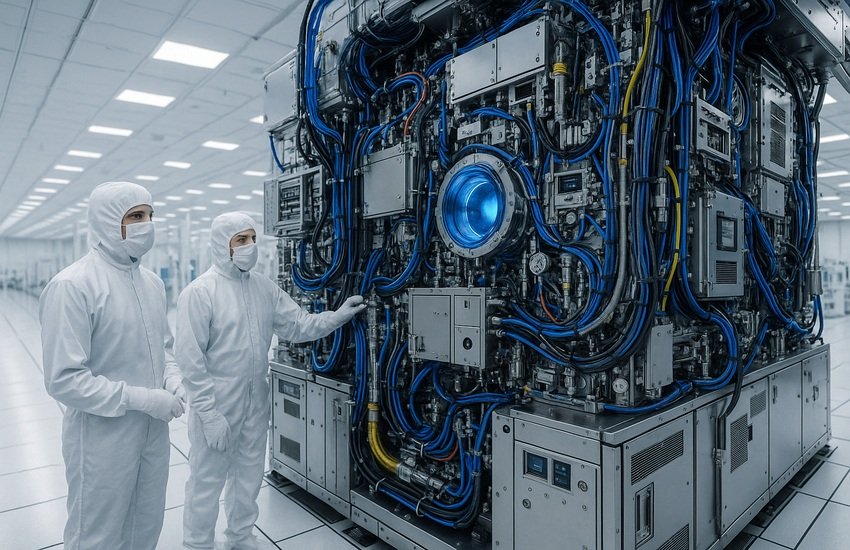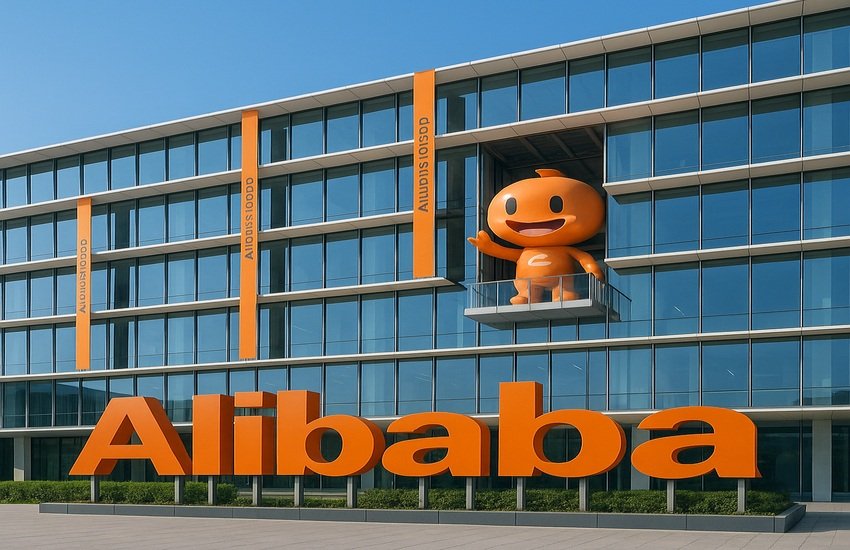Apple shares are on the rise again, powered by stronger-than-expected demand for the newly launched iPhone 17. After stumbling below $230 in the wake of a lukewarm launch event, Apple stock rebounded to $236.57, up 1.1% on the day, outpacing the S&P 500’s 0.5% gain. While initial reactions to the iPhone 17 were muted, investors are now reassessing their expectations in light of robust preorder volumes and significantly extended delivery times — both of which suggest consumer enthusiasm is running high, particularly in key markets like the U.S., China, and the U.K. This dynamic mirrors — and in some metrics, surpasses — what was seen during last year’s iPhone 16 cycle. Analysts from J.P. Morgan and BofA have flagged the early lead-times as some of the longest since the iPhone 11 launch. For shareholders, this could be a pivotal moment, as iPhone 17 momentum not only bodes well for Q3 results, but also reignites bullish sentiment heading into 2026.
Record-Breaking Preorders
Preorder data for the iPhone 17 series points to an exceptionally strong launch performance that has surprised even seasoned market watchers. According to J.P. Morgan, initial delivery lead-times — a proxy for demand — are running ahead of those observed during the iPhone 16 cycle. The analyst noted that base iPhone 17 models and the ultra-thin iPhone 17 Air have shown particularly strong traction across multiple geographies including the U.S., U.K., Germany, and China. Apple’s early focus on hardware differentiation — with standout features like a redesigned chassis and upgraded cameras — appears to be resonating with consumers despite the device’s high price tag. BofA Securities analysts add that the iPhone 17’s ship dates are the longest since the iPhone 11 launch, another bullish indicator for sustained demand. In emerging markets, Apple is seeing double-digit year-over-year growth in iPhone sales, driven in part by the appeal of the new lineup and ongoing ecosystem lock-in. In China, India, Brazil, and South Asia, the iPhone 17’s release has triggered a wave of upgrades, even in regions where Apple’s premium pricing can be a barrier. Notably, in China, Apple also recorded an all-time high for iPhone upgraders in the June quarter. With the iPhone 17 Air replacing the Plus model at a $999 price point, Apple appears to be successfully shifting its product mix toward higher-margin SKUs. The strength of these preorders — combined with widespread interest in AI-related features rolling out with iOS 26 — suggests that Apple has avoided the typical “S-year” lull that can follow more transformative hardware updates.
Extended Delivery Times As A Positive Signal
One of the clearest indicators of heightened demand for the iPhone 17 family has been the sharp extension in delivery times across multiple geographies and SKUs. Ship dates for the iPhone 17 Pro and Pro Max have been pushed out further than those for last year’s iPhone 16 equivalents, especially in China and Japan, where wait times are averaging a full week longer than in other regions. This is a meaningful signal — historically, extended delivery timelines during the early weeks of a new iPhone cycle have correlated with strong sell-through figures and robust quarterly earnings. J.P. Morgan’s analysis also notes that the base iPhone 17 model is showing better-than-expected demand, contrasting with prior years where early momentum skewed heavily toward premium models. This broader demand base may help smooth out Apple’s product mix and improve gross margins over time. Meanwhile, the new iPhone 17 Air, despite a delayed launch in China due to regulatory clearance, is also showing early signs of traction elsewhere. Although supply appears more abundant than for the iPhone 16 Plus at this stage last year, analyst Ming-Chi Kuo cautions that Apple is producing more units of the Air model than it did for the Plus — meaning a longer runway is required before drawing conclusions about relative performance. Overall, the stretched ship times align with seasonal peaks in iPhone demand, and they reinforce that early concerns about consumer fatigue or soft upgrade cycles were likely overstated.
Investor Confidence Boost
Apple’s stock performance following the iPhone 17 preorder news reflects a significant reversal in sentiment. Initially, shares slid below $230 on the perception that the product launch lacked wow factor. However, the evidence of sustained demand has reignited bullish outlooks among institutional investors. As of September 15, AAPL was trading at $236.57, with analysts now positioning the stock for a potential “golden cross” — a technical signal where the 50-day moving average crosses above the 200-day moving average, often seen as a bullish indicator. Historically, Apple stock has delivered an average return of 9.1% in the six months following a golden cross, and 18.5% over a 12-month period. Fundamentally, strong iPhone 17 sales could support Apple’s Q3 results and drive further revisions to both top-line and bottom-line estimates. Services revenue, which reached an all-time high of $27.4 billion in the June quarter, is also benefiting from higher iPhone engagement, with paid subscriptions now exceeding 1 billion globally. Importantly, the iPhone installed base continues to hit new records, especially in Greater China and emerging markets. This expanding base provides a solid recurring revenue stream via the App Store, iCloud, and Apple Music. On the AI front, Apple’s WWDC updates and upcoming iOS 26 integration have also provided a narrative lift, with features like personalized Siri, visual intelligence, and on-device generative models drawing investor attention. While valuation remains elevated, the combination of strong fundamentals, compelling product momentum, and continued buybacks — Apple returned $27 billion to shareholders last quarter — is helping to restore confidence after a choppy start to 2025.
Possible Supply-Chain Strain
Despite the strong demand narrative, Apple’s supply chain is entering a period of stress, especially as regulatory friction, geopolitical tariffs, and production diversification efforts intersect. Apple incurred $800 million in tariff-related costs in the June quarter and expects that figure to climb to $1.1 billion for the September quarter, assuming current rates hold. A key driver of these costs is the ongoing reshoring of production. While a growing share of iPhones sold in the U.S. now originate from India and other Apple products from Vietnam, much of Apple’s international output — particularly for China — is still China-based. Apple’s move to scale its semiconductor and component supply across 12 states and 24 factories in the U.S., alongside its $500 billion investment pledge, is part of a broader mitigation strategy, but it’s unlikely to materially impact near-term margin pressure. Complicating matters, the iPhone 17 Air’s delay in China underscores the regulatory challenges of expanding product launches in sensitive markets. Moreover, capacity constraints could emerge if supply planning misaligns with real-time demand signals, particularly for the Pro and Pro Max models, where lead-times are most extended. This scenario could cap upside potential in the short term and lead to sporadic availability in critical sales windows. Any persistent mismatch between supply and demand may also affect Apple’s ability to capitalize fully on favorable seasonal dynamics and upgrade cycles. Investors are likely to watch gross margin trends closely in upcoming earnings, especially as Apple juggles higher input costs, component complexity, and expanded AI hardware requirements.
Key Takeaways
Apple’s recent rally in response to strong iPhone 17 preorders and extended delivery timelines indicates a healthy demand cycle, especially when contrasted with last year’s iPhone 16 launch. Key indicators such as broader geographical uptake, record upgraders, and services engagement reinforce the momentum. However, this optimism is tempered by potential near-term constraints in the supply chain, regulatory delays in China, and rising tariff-related costs, which are expected to add over $1 billion in additional expenses this quarter alone. From a valuation standpoint, Apple remains richly priced. As of mid-September, its LTM P/E stands at 36.01x, EV/EBITDA at 24.57x, and Price/Free Cash Flow near 30.33x — all well above historical averages and sector medians. While forward growth prospects, especially in AI and services, may support these levels, current multiples suggest that much of the good news may already be reflected in the price. Continued monitoring of actual sales data, gross margin evolution, and Apple’s ability to navigate global supply dynamics will be critical in evaluating whether the recent stock move has further room to run or is nearing a plateau.





